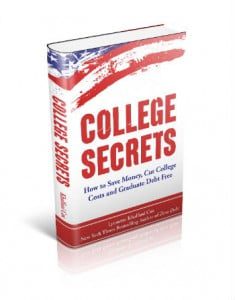The latest data from the College Board show that college students spend about $1,200 a year on books and supplies.
That’s a lot of cash. But believe it or not, the National Association of College Stores reports that spending on college textbooks is actually on the decline.
Textbook expenditures are heading south due to two factors: technology, as well as the overall demand (by students and some colleges alike) for greater affordability.
On the technology front, some colleges are actually providing textbooks free of charge and exploring alternatives to those enormous and enormously expensive textbooks of a generation ago.
Nevertheless, 40% of U.S. families still report being surprised by certain college expenses — and the most common culprits are college textbooks, supplies and equipment, according to a Sallie Mae survey.
To avoid certain unwanted financial surprises, here are 13 strategies that will save you lots of money on college textbooks and supplies.
-
Consider not buying certain textbooks
-
Check books out from the library — any library
-
Use open source textbooks
-
Swap or barter
-
Share books with another student
-
Avoid the campus bookstore
-
Get the international version
-
Use an older edition
-
Buy used books
-
Try e-books
-
Rent textbooks
-
Go directly to the publisher
-
Sell your books after the course
In this article, I’ll explore the first two strategies, based on information from my book, College Secrets. Both of these strategies – and three others revealed in the book – will help you get textbooks completely free of charge.
In future columns, I’ll explain the other strategies mentioned above, to make sure you know every possible way to save on college textbooks and supplies.
Consider Not Buying Textbooks At All
One of the biggest mistakes students make — and then later regret — is loading up on tons of brand-spanking new textbooks and then later discovering that there are certain texts that they never really used.
Sometimes students’ books will literally still have the plastic wrap around them at the end of the semester, because they weren’t essential to the class, and were never cracked open.
How is this possible? Are these students just goofing off and not studying? Actually no.
It’s simply that textbooks may not be absolutely mandatory for learning, testing or other forms of academic engagement.
Class notes from faculty lectures may be far more important, group projects or fieldwork may be emphasized, or films and other in-class assignments may take center stage. But it’s hard to know this until you’ve actually sat through a course — unless, that is, you do some preliminary homework on what the class entails.
Recommended Reading Vs. Required Reading
So the very first step in controlling textbook expenses is to figure out whether you really and truly need a given book at all.
The syllabus for a class usually gives you the first hint.
If a book is designated as “recommended reading,” it’s not mandatory and likely won’t get much use. It could just be a text that the professor thinks may be of interest or is merely supplementary to the heart of classroom activity.
On the other hand, books labeled as “required reading” are typically far more important. But even then, not every text declared as “required” turns out to be essential.
Either way, once you know what class you’re taking, it’s a smart idea to e-mail the professor and ask directly whether a given book on a syllabus is actually necessary for the class.
For additional perspective, you can also ask a student who has just taken the course how necessary he or she found the book. Such feedback can be valuable. But do heed, first and foremost, what the professor has to say.
Some professors will tell you flat-out that certain books on a syllabus really aren’t essential. Others will say various texts are absolutely necessary. Either way, at least you know upfront what to expect. Armed with this knowledge, you can possibly save money by forgoing a book purchase altogether if it’s clear that a book won’t be critical, or even mildly helpful, to your studies.
If it’s not indicated in your syllabus, also ask your professor for three other key pieces of information: the ISBN for the book, any online lab codes you might need for additional materials, and info on any CDs or DVDs that are required with the text.
Check Books Out From The Library — Any Library
If you truly need to get your hands on a copy of an essential textbook for a class, libraries may turn out to be your single best sources of free materials.
Savvy students save many hundreds of dollars per semester by borrowing mandatory textbooks, and most students get the books from their own campus library.
You can usually do this in several ways.
First, the book might be available for normal checkout, and you can keep it for a few weeks and renew it as often as necessary — provided no one else is demanding the book.
Even if you wind up paying a late fee for going past the book’s return date, that fine will be a tiny fraction of the book’s cost. (In fairness to other students, though, don’t hog a book all semester long if there’s a waiting list for it).
Alternatively, you can check the Reserve Collection at your college or university’s library.
The Reserve Collection is a special area (usually near the Circulation desk) where professors leave designated materials for their students. Professors do this because they understand that books are costly and that not everyone can afford to purchase $200 textbooks.
Books held in the Reserve Collection usually have short borrowing periods of just an hour or two. The reason for the tight window is to give as many students as possible the chance to read a popular required textbook.
Books taken from the Reserve area are usually supposed to be read only within the library; meaning you can’t take them out of the building.
With some classes, there may be exceptions to this general rule, particularly if a professor approves a long-term borrowing option — with “long term” meaning anywhere from a day to perhaps as long as a week.
Professors have been known to also earmark other materials — like DVDs, PowerPoint presentations and audio files — in the Reserve Collection area. Getting these materials on a short-term basis from the library is a great way to save money on books and other necessary supplies.
The Interlibrary Loan System
If you need a specific textbook, but it isn’t available in your school’s library, you have three options.
You can ask the professor to please request a copy (or an additional copy) for the campus library. Most professors would be more than happy to oblige this request, especially if there was no book put on reserve for the class.
Alternatively, you can take advantage of an under-utilized benefit at many colleges and research universities. That benefit is the interlibrary loan system.
Under this system, your library will tap into the resources of affiliated libraries and see if the book you want is available elsewhere. If a book is located in another library, your campus librarian will arrange to have the book delivered to your school — all at no cost to you.
You can get a host of items through interlibrary loan, including: articles, audio-visual materials, books, book chapters (typically emailed in PDF format, with a one-chapter limit to avoid copyright infringement), dissertations and theses, journals, microfilm, recordings and other materials.
You often get to keep these items for several weeks and can renew them as well.
If no other library in your college’s interlibrary loan system has the textbook you need, there’s nothing to stop you from going to a public library in the city or town in which you live and inquiring about whether they have the book on their shelves.
Certain very large companies have corporate libraries. So if a close relative works for a Fortune 100 firm, he or she likely has borrowing rights and may be able to help you out in a pinch.
The Power of Your Local, Public Library
Most often, though, you’ll just need to go to a nearby public library. If you don’t have a library card for your local library, get one pronto!
With that public library card, you can take advantage of all their resources — including their interlibrary system, which may include connections with other public, academic or corporate libraries not tied to your own campus network.
In the end, it may take some effort to hunt down all your required books, and it’s very possible that specific books may not be available through libraries. But when you do find out that a given book does exist within the library system, it’s wise to take advantage of this free resource.
As a final note about library books and other borrowed materials, you should obviously treat these items with the utmost care. Don’t write notes in books, doodle any funny drawings or highlight any of the text.
Keep all library materials in tip-top condition, do your best to observe deadlines, and return library items exactly as you received them.











